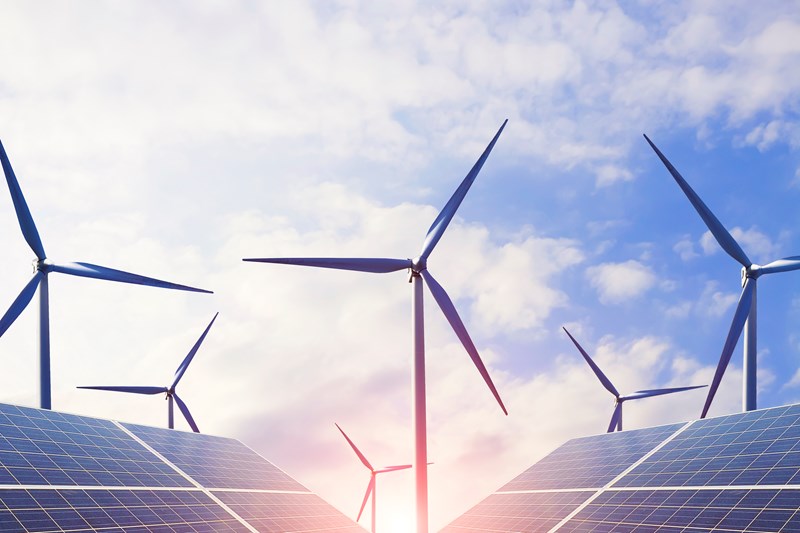Will the capital pool for renewables dry up?
Renewables are a crucial part of the future energy mix – but a global recession could alter investor attitudes
1 minute read
The coronavirus pandemic has stalled economic activity, shocked financial markets and thrown energy markets into turmoil. Renewables play a pivotal role in the energy transition, and our forecast for the sector remains strong – but how has the capital pool changed?
In a recent webinar, Peter Martin, Principal Economist, Macroeconomics, Prashant Khorana, Principal Consultant, Power & Renewables, and Michelle Davis, Senior Analyst, Solar, shared their expert views.
If you have an hour to spare, listen to the webinar replay.
If you have a few minutes, read on for a few of the key discussion points.
Global economy in deep recession
Efforts to contain the spread of coronavirus are having a severe impact on economic activity. We forecast that global GDP will contract 4% in 2020 before rebounding to 4.9% next year. You can read about our global economic outlook in more detail in Will the natural resources sector recover from Covid-19?
The renewables “wall of liquidity” is still standing – just not as high as it was
Wind and solar projects have attracted significant pools of capital in the last decade. The bulk has come from listed and unlisted funds, with the role of passive investors, such as pension funds, set to increase.
Renewables had effectively built a “wall of liquidity” in the pre-Covid-19 world that was often larger than investable opportunities. The wall isn’t as high as it was – but it’s still standing, with fairly robust capital availability. And while there is increased caution, and some delays to M&A activity, long-term investor interest remains strong.
Project finance lenders are relatively well capitalised and keeping lending lines open for contracted projects. On utility-scale projects, the low populations in rural areas mean that activity on greenfield developments might pick up faster post-lockdown than residential or commercial developments located in dense urban areas.
Debt and equity markets are still open for renewables – but there are downside risks
Deals are being chased, but there are downside risks to contend with. For one thing, recession could lead to a rise in nationalist policies. So, while Asian investors have shown significant interest in European power projects, foreign direct investment could become more challenging. In Spain, for example, foreign investments of 'significant national interest’ now require government authorisation.
Falling power prices also pose a risk. Sustained declines would pose a material risk of project margin erosion. Uncontracted merchant power assets face the biggest risk.
There will be a flight to quality in solar investments
Lockdown measures had a significant impact on the global solar PV market, as demand declined and construction and development slowed. Even as lockdowns ease, in the current economic climate residential solar is likely to be hit by delayed consumer investment decisions. We forecast an 18% drop in solar installations for 2020 – but expect this to recover in 2021.
Debt financing for solar hasn’t dried up, but investors are being choosier. In the US, interest rates have remained stagnant or only slightly higher, with lenders taking the increased spread between the federal funds rate and their interest rate as their risk premium. Projects that might have been on the margin of their risk appetite could struggle to get financing – and that will probably hit small and medium-scale distributed solar projects with commercial customers the hardest.
It’s a similar story with tax equity. Investors still want to deploy capital but will be tightening their requirements and retreating to higher quality credit profiles.
Lending behaviour for residential solar has changed – and so will capital sourcing strategies
There have been clear changes in behaviour in residential solar financing. Before the pandemic, many loan providers were starting to give portions of their payments to installers earlier in the project cycle, largely as a way to compete. We’re now seeing providers revert to distributing most (if not all) of the funds at project installation.
We also expect to see residential solar financiers rethinking their strategies for securing capital. The asset-backed securities (ABS) market has been a major source, but ABS prices have declined dramatically. So, while most major financiers probably have enough capital for the next six to 12 months, especially given suppressed demand, they will now be reassessing how they raise and diversify capital resources.
Hear the full discussion
For a more detailed discussion of these topics, listen to the webinar replay. This includes more on:
- Renewables investment trends, before and after Covid- 19
- Investor optimism for greenfield activity
- Why renewables may be seen as a relatively safe haven in a rocky economy.
Fill in the form at the top of this page for complimentary access.
Power & Renewables: unique insight and analysis
Wood Mackenzie's integrated power, solar, wind, storage and grid edge market intelligence services enable you to understand how transformative technologies are affecting power markets and evaluate new opportunities.








